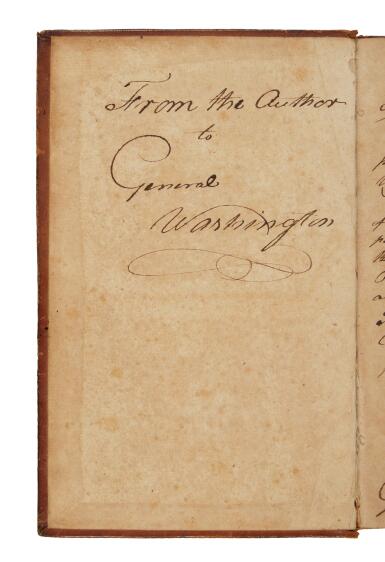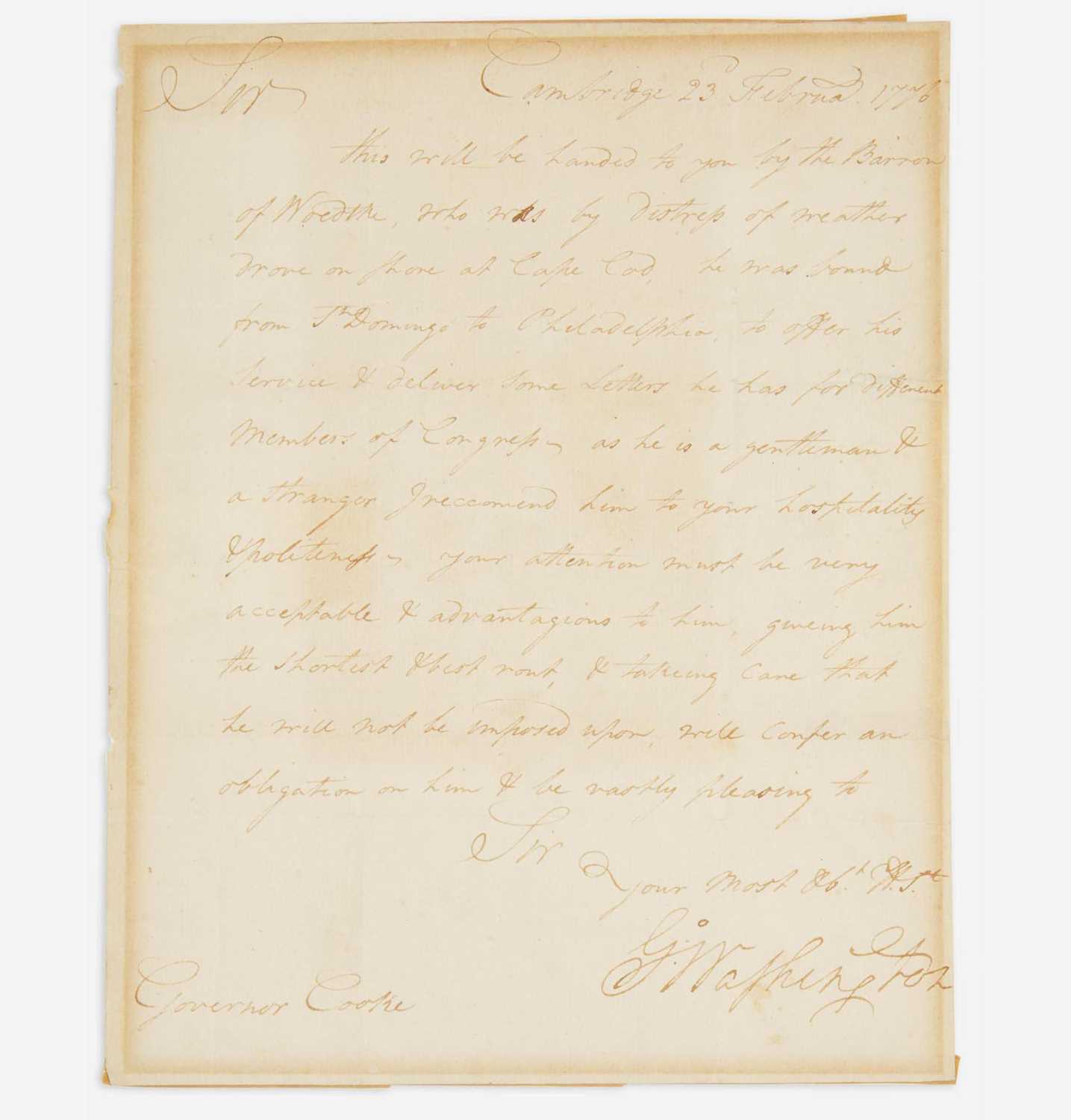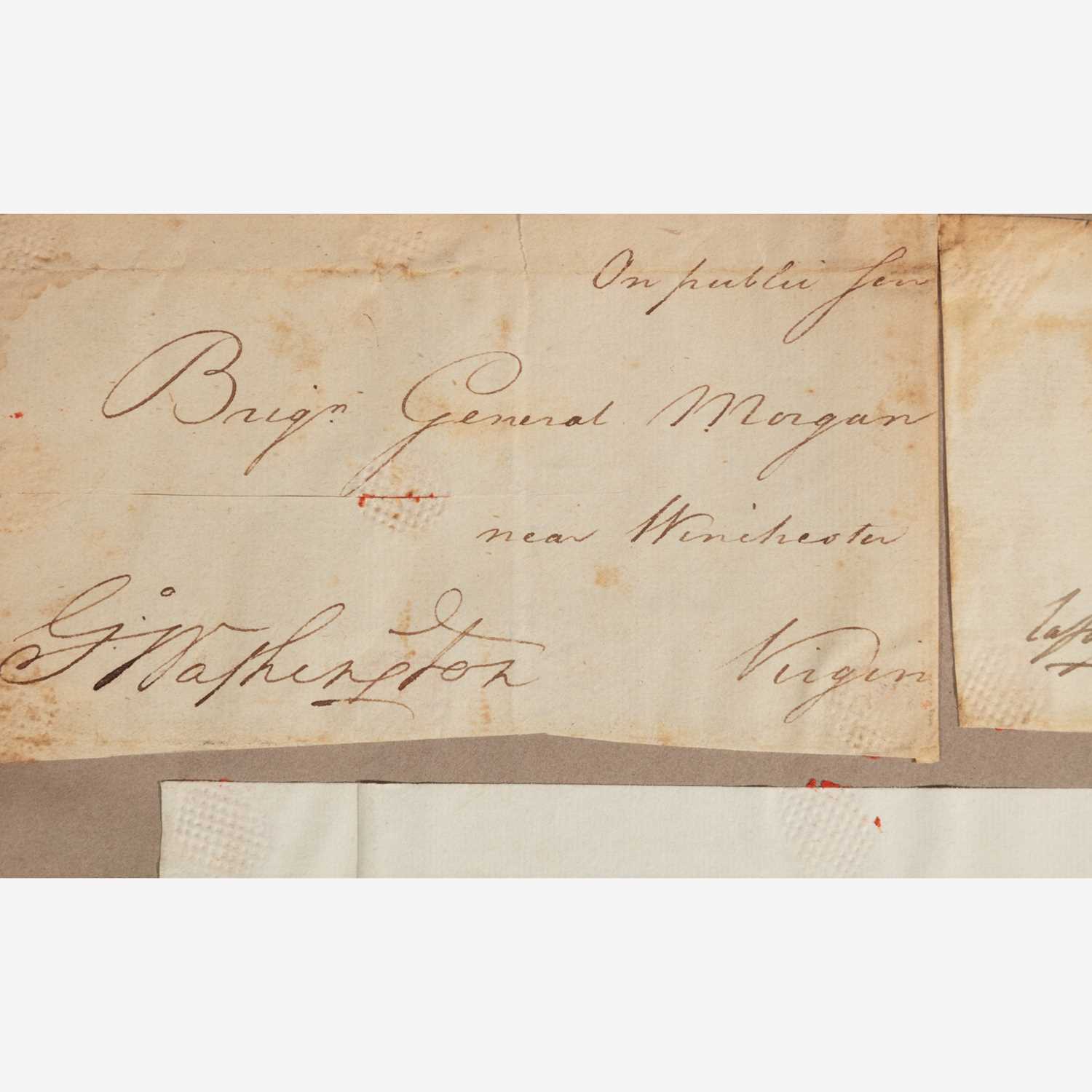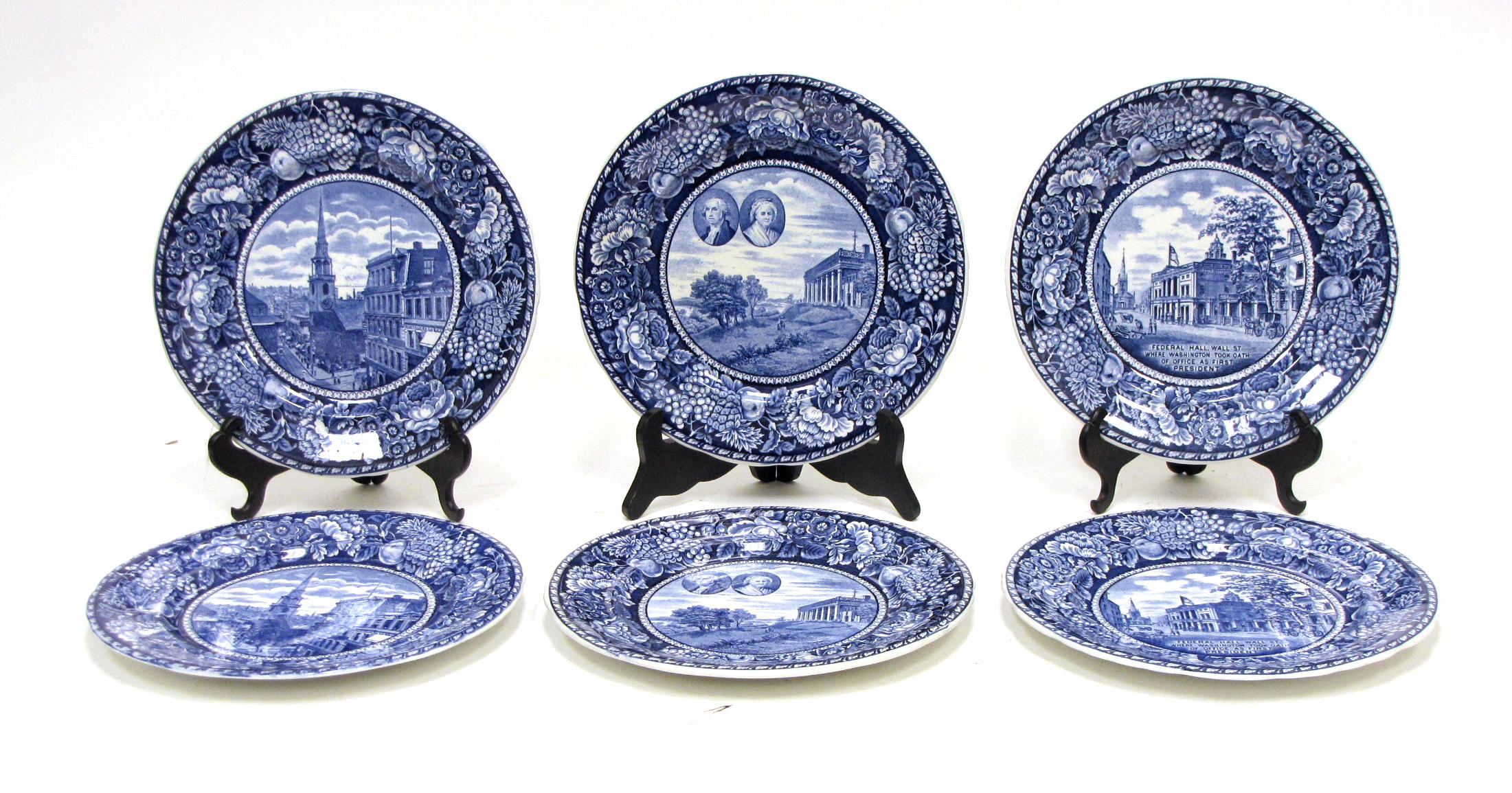[Presidential] Washington, George Group of 2 Documents Relating to The Potomack Company Washington, George Document, signed No place, June 2, 1788. One sheet, 11 7/8 x 7 1/16 in. (302 x 179 mm). Manuscript account statement for The Potomack Company in a secretarial hand, signed by George Washington, as first president of the Potomack Company, as well as trustees, Thomas Johnson Thomas Sims Lee, and George Griffin; docketed on verso. Creasing from original folds, scattered separations along same; toned; chipping along bottom edge, affecting Griffin's signature; top left corner chipped. Lot includes two engraved portraits of Washington. Record of expenses for Richardson Stuart, Canal Superintendant for the Great Falls of Potomack, for "Sundry Bills for himself & Horse, etc.."; approved and signed by Washington and three trustess of the Potomack Company. Together with: Rumsey, James Autograph Document, signed No place, July 7, 1786. One sheet, 4 1/2 x 7 1/4 in. (114 x 184 mm). Autograph bill, signed by James Rumsey, as Superintendant of Construction of Canals for the Potomack Company, for Richardson Stuart, for "9 pairs of shoes to their Servants..."; signed at bottom by Richardson; docketed on verso. Creasing from original folds; minor edge-wear. Due to labor shortages, the Potomack Company used a mixture of free, indentured, and slave laborers. American engineer James Rumsey (1743-92), was hired as Chief Engineer by Washington, and directed the laborers in their efforts to clear the canals. Rumsey developed a prototype for a mechanical boat, that would eventually become the steamboat, for use on the cleared canals, and was encouraged by Washington to get a patent. The pole-boat developed by Rumsey would make navigating upstream much easier, thus enabling the quicker deployment of goods and people along the river. The Potomack Company was established in 1785 by George Washington, Horatio Gates, and others, for the purpose of connecting the Potomac, James, and Ohio Rivers through a network of roads, canals, and locks, making them more easily navigable for the purposes of commerce and the movement of people, especially in aid of western settlement. Washington, a surveyor in the years before the Revolution, had acquired thousands of acres of land in the Ohio Valley, and had witnessed the rapid influx of settlers into the region. He believed that making navigation easier between the East Coast and the Western frontier in the Ohio Valley was crucial in developing a stronger and more unified Union, while also helping prevent the spread of British and Spanish influence. The company began developing large swaths of the Potomac, but due to a myriad of issues, including a lack of consistent funding, little federal support, and persistent labor issues, it was eventually subsumed by the larger and better organized, Chesapeake and Ohio Canal Company, in 1828. While a failure, it is considered one of the first large-scale infrastructure projects in the United States following the Revolution: "Unlike many other schemes projected or accomplished during this era, the Potomac Company's plan to connect with the Ohio Valley was truly national in scope. Where advocates of other projects were less ambitious, the Potomac Company bodly proposed to unite two major regions of the country." (Douglas R. Littlefield, The Potomac Company: A Misadventure in Financing an Early American Internal Improvement Project, Business History Review 58, 1984, p. 585).
[Presidential] Washington, George Group of 2 Documents Relating to The Potomack Company Washington, George Document, signed No place, June 2, 1788. One sheet, 11 7/8 x 7 1/16 in. (302 x 179 mm). Manuscript account statement for The Potomack Company in a secretarial hand, signed by George Washington, as first president of the Potomack Company, as well as trustees, Thomas Johnson Thomas Sims Lee, and George Griffin; docketed on verso. Creasing from original folds, scattered separations along same; toned; chipping along bottom edge, affecting Griffin's signature; top left corner chipped. Lot includes two engraved portraits of Washington. Record of expenses for Richardson Stuart, Canal Superintendant for the Great Falls of Potomack, for "Sundry Bills for himself & Horse, etc.."; approved and signed by Washington and three trustess of the Potomack Company. Together with: Rumsey, James Autograph Document, signed No place, July 7, 1786. One sheet, 4 1/2 x 7 1/4 in. (114 x 184 mm). Autograph bill, signed by James Rumsey, as Superintendant of Construction of Canals for the Potomack Company, for Richardson Stuart, for "9 pairs of shoes to their Servants..."; signed at bottom by Richardson; docketed on verso. Creasing from original folds; minor edge-wear. Due to labor shortages, the Potomack Company used a mixture of free, indentured, and slave laborers. American engineer James Rumsey (1743-92), was hired as Chief Engineer by Washington, and directed the laborers in their efforts to clear the canals. Rumsey developed a prototype for a mechanical boat, that would eventually become the steamboat, for use on the cleared canals, and was encouraged by Washington to get a patent. The pole-boat developed by Rumsey would make navigating upstream much easier, thus enabling the quicker deployment of goods and people along the river. The Potomack Company was established in 1785 by George Washington, Horatio Gates, and others, for the purpose of connecting the Potomac, James, and Ohio Rivers through a network of roads, canals, and locks, making them more easily navigable for the purposes of commerce and the movement of people, especially in aid of western settlement. Washington, a surveyor in the years before the Revolution, had acquired thousands of acres of land in the Ohio Valley, and had witnessed the rapid influx of settlers into the region. He believed that making navigation easier between the East Coast and the Western frontier in the Ohio Valley was crucial in developing a stronger and more unified Union, while also helping prevent the spread of British and Spanish influence. The company began developing large swaths of the Potomac, but due to a myriad of issues, including a lack of consistent funding, little federal support, and persistent labor issues, it was eventually subsumed by the larger and better organized, Chesapeake and Ohio Canal Company, in 1828. While a failure, it is considered one of the first large-scale infrastructure projects in the United States following the Revolution: "Unlike many other schemes projected or accomplished during this era, the Potomac Company's plan to connect with the Ohio Valley was truly national in scope. Where advocates of other projects were less ambitious, the Potomac Company bodly proposed to unite two major regions of the country." (Douglas R. Littlefield, The Potomac Company: A Misadventure in Financing an Early American Internal Improvement Project, Business History Review 58, 1984, p. 585).














Testen Sie LotSearch und seine Premium-Features 7 Tage - ohne Kosten!
Lassen Sie sich automatisch über neue Objekte in kommenden Auktionen benachrichtigen.
Suchauftrag anlegen